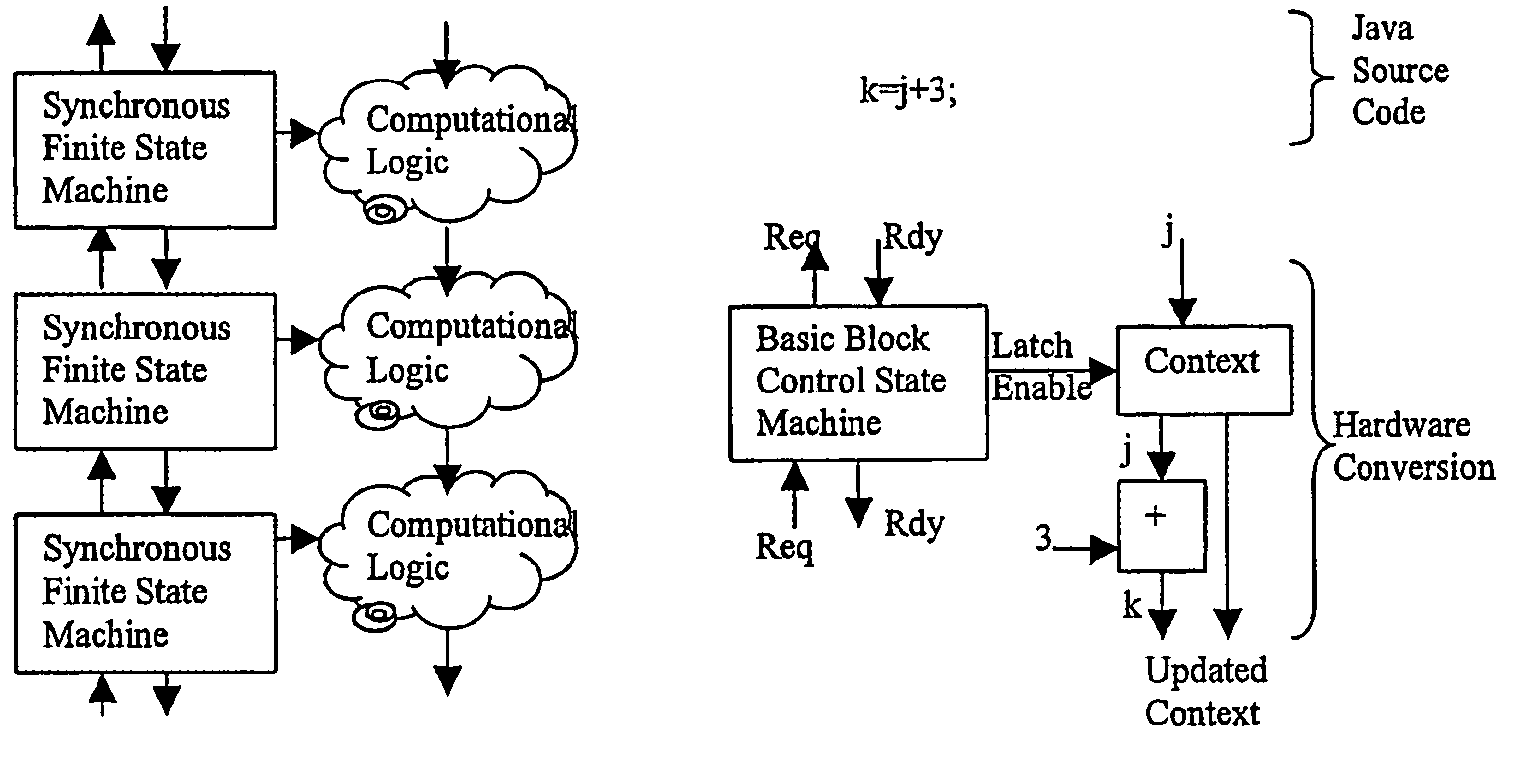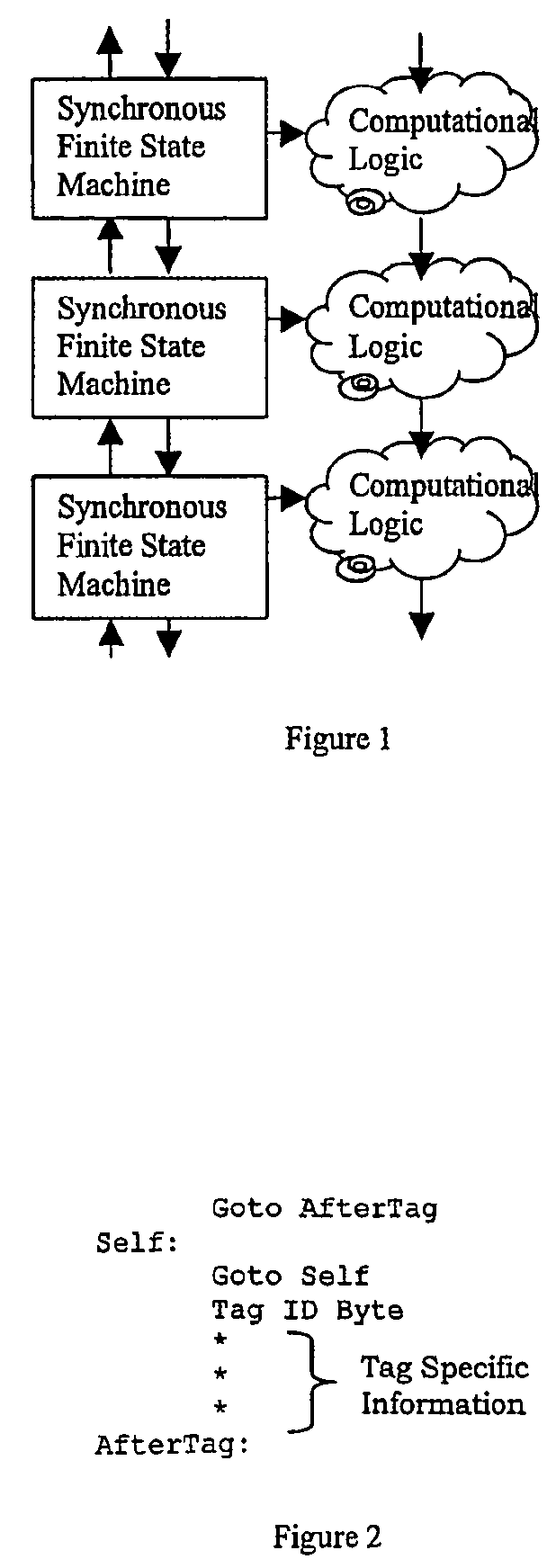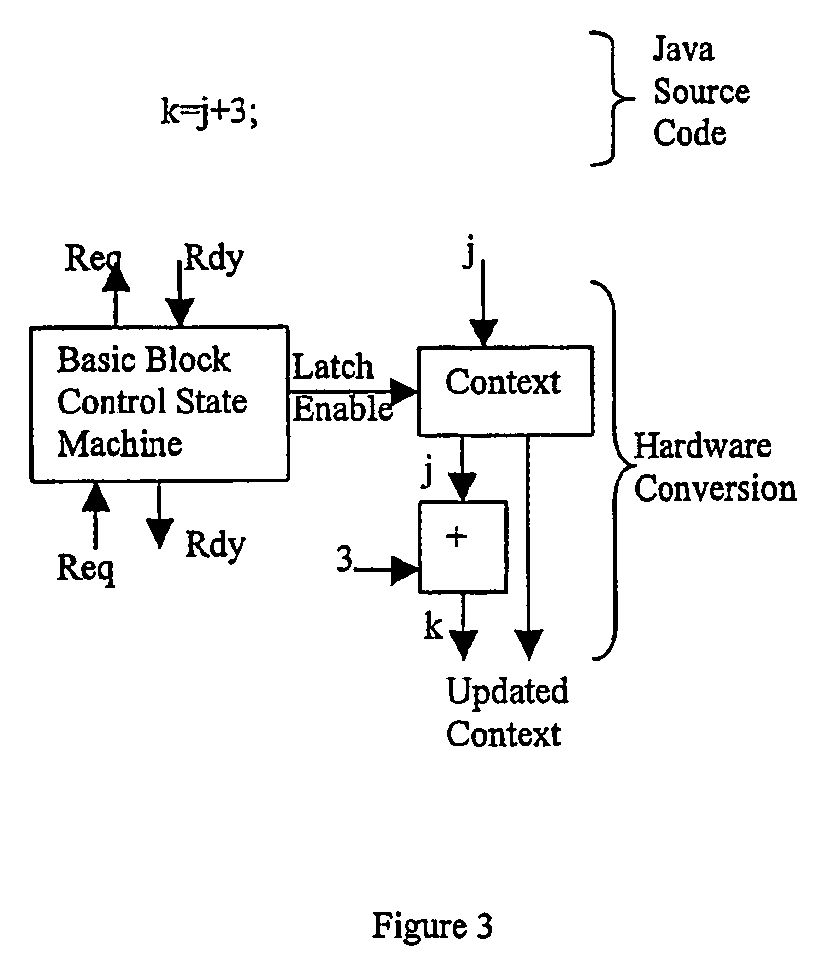System of finite state machines
- Summary
- Abstract
- Description
- Claims
- Application Information
AI Technical Summary
Benefits of technology
Problems solved by technology
Method used
Image
Examples
Embodiment Construction
[0098]Modifications to the Jikes Java Compiler
[0099]The Java code is compiled by a modified version of the Java compiler Jikes. We added keywords to the otherwise standard Java syntax recognized by Jikes. As noted above, in principle the compiler could have been modified to recognize parallelizable and systolizable loops (see [12]). At some point in the future, we intend to do this.
[0100]In addition to the par, we also included the keywords netstart, netend, and expose. Netstart and netend indicate respectively the beginning and end of the code to be analyzed for hardware mapping. Expose designates variables that are required as output from the execution engine. All of these represent expediencies that could, in principal, be automatically recognized by a compiler.
[0101]The structures which may be inserted into the Java class files include start tags, stop tags, and parallel loop descriptor tags. The latter designate ‘for’ loops for vectorization. The byte code interpreter has speci...
PUM
 Login to View More
Login to View More Abstract
Description
Claims
Application Information
 Login to View More
Login to View More - R&D
- Intellectual Property
- Life Sciences
- Materials
- Tech Scout
- Unparalleled Data Quality
- Higher Quality Content
- 60% Fewer Hallucinations
Browse by: Latest US Patents, China's latest patents, Technical Efficacy Thesaurus, Application Domain, Technology Topic, Popular Technical Reports.
© 2025 PatSnap. All rights reserved.Legal|Privacy policy|Modern Slavery Act Transparency Statement|Sitemap|About US| Contact US: help@patsnap.com



